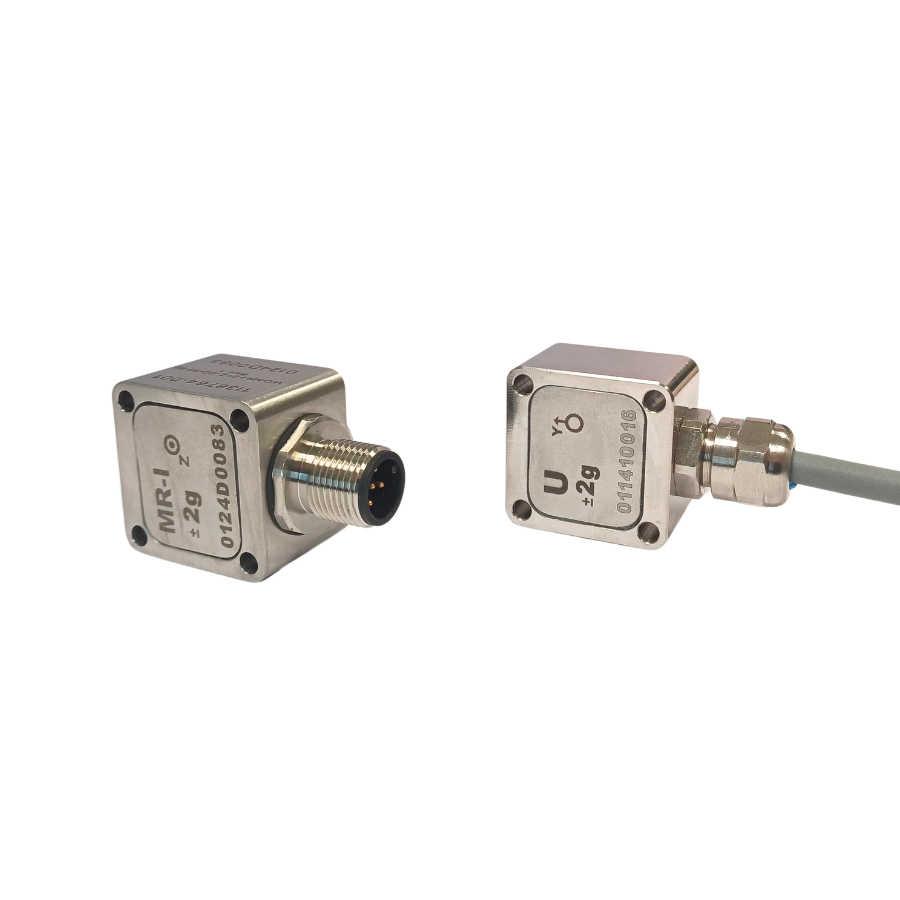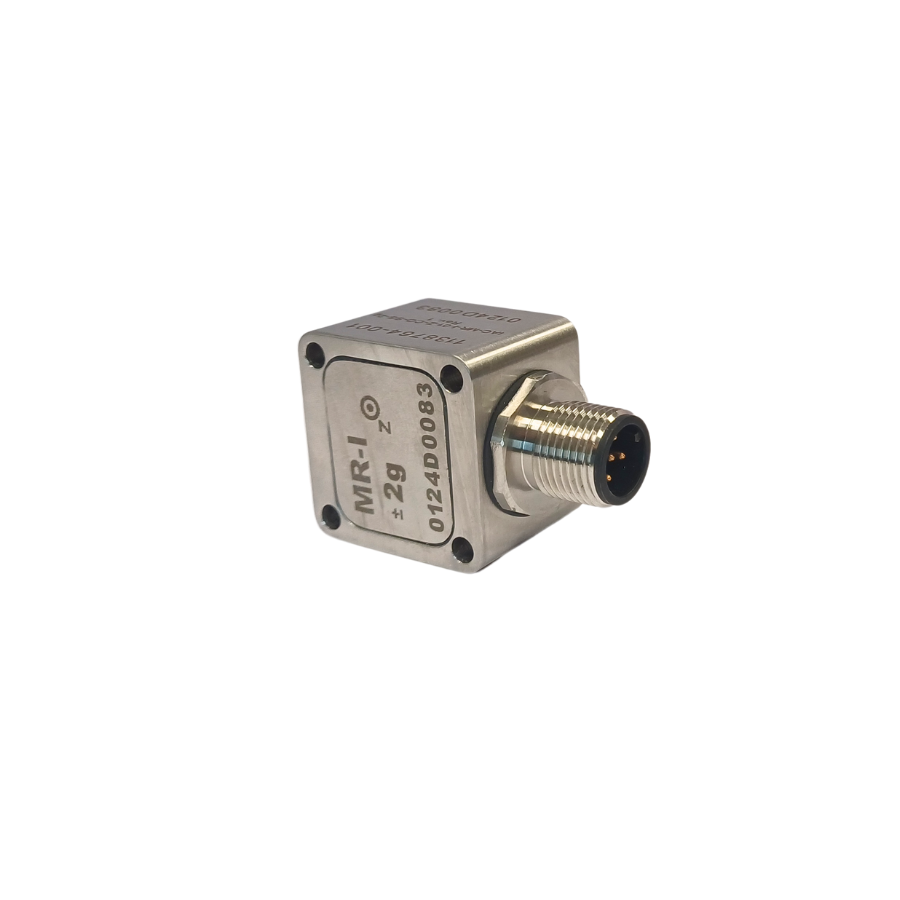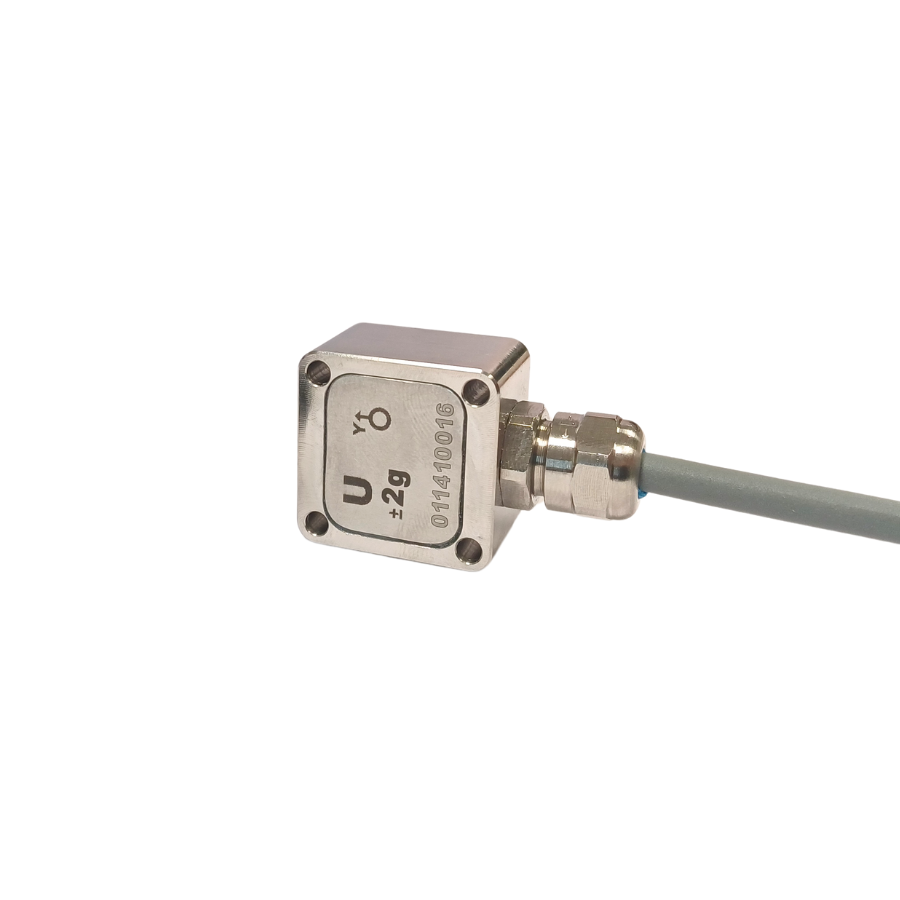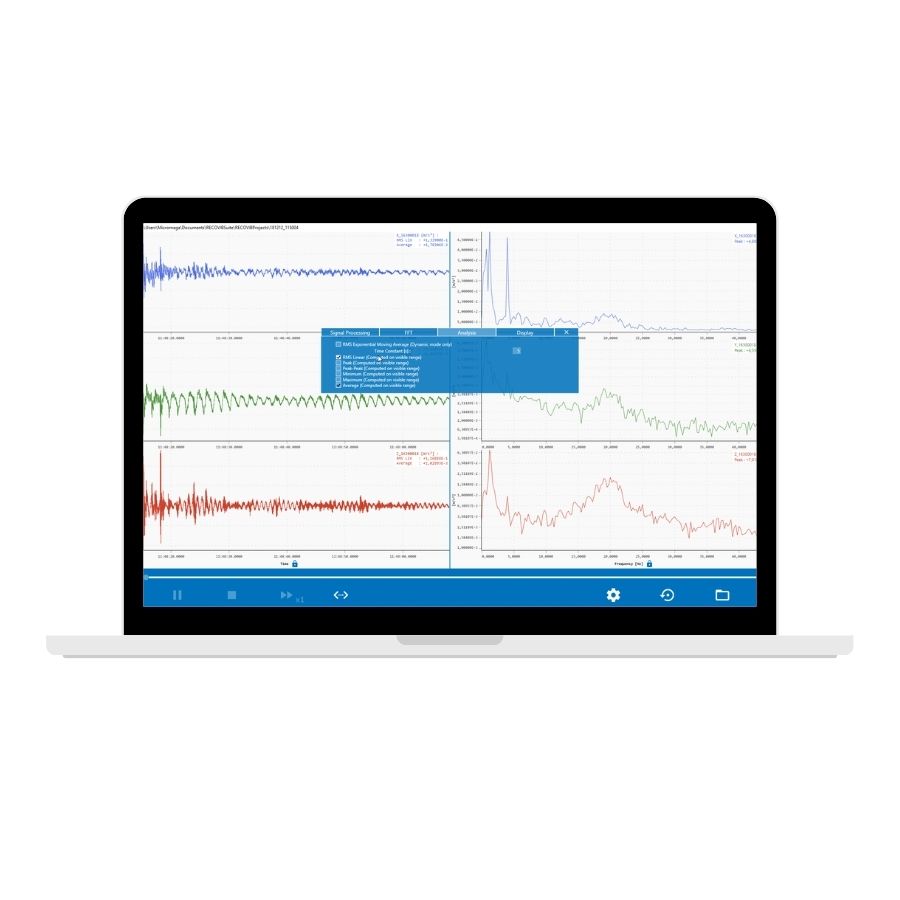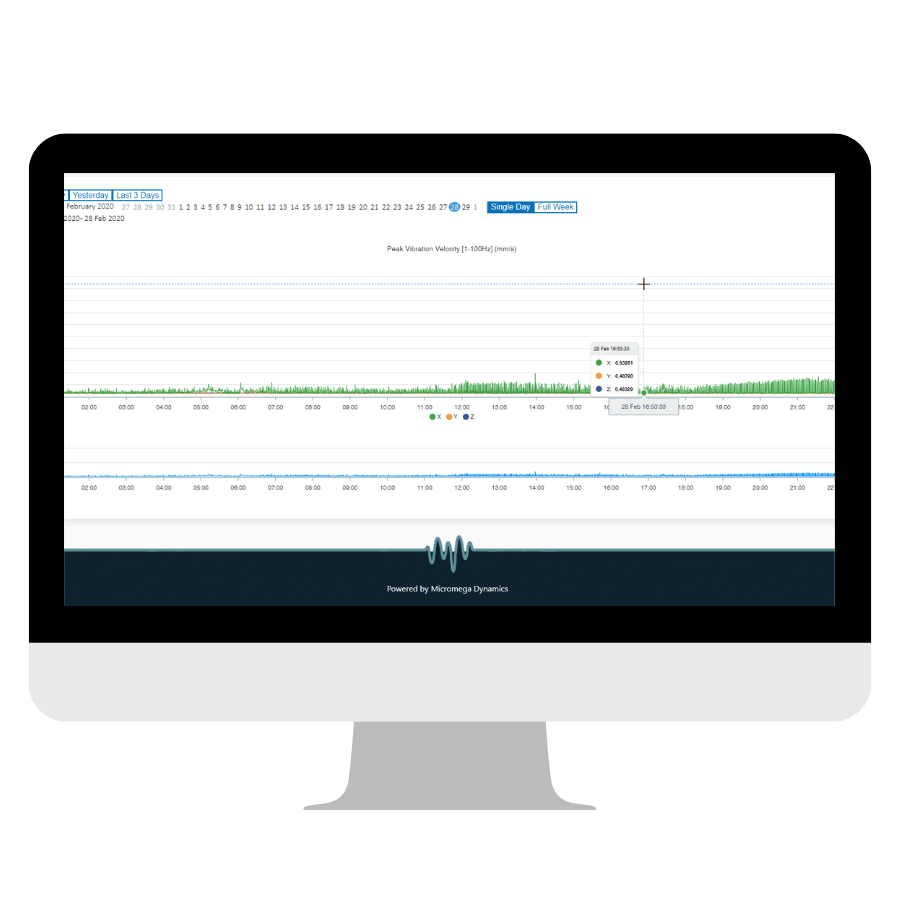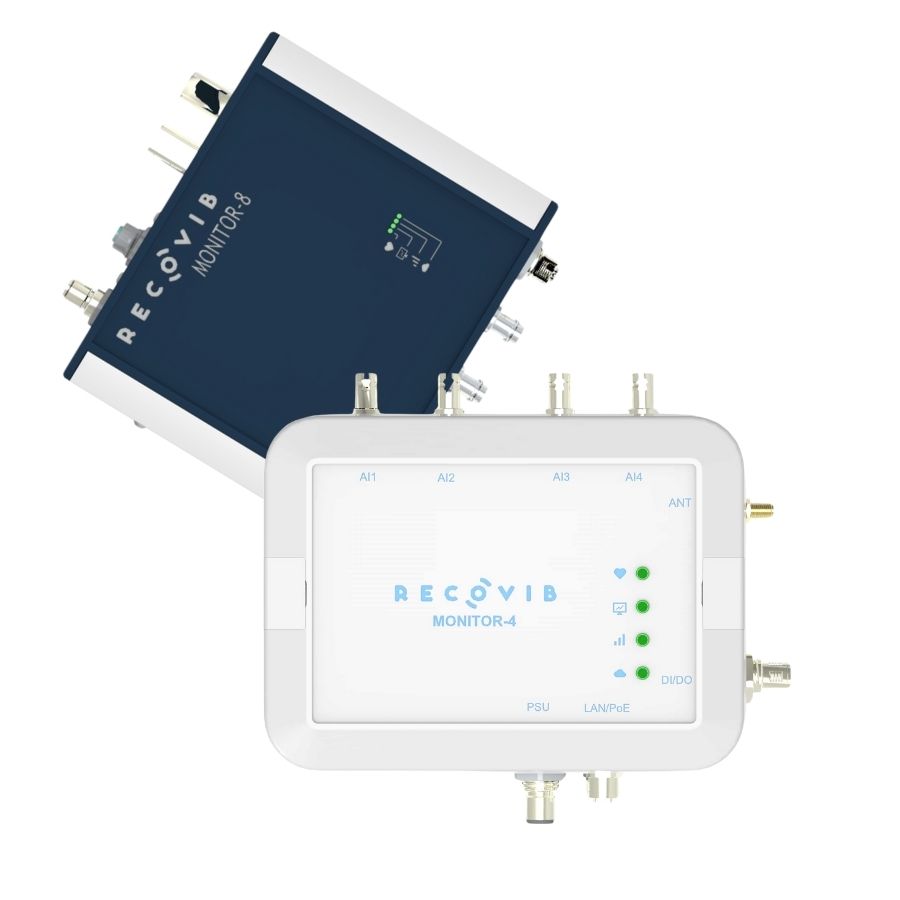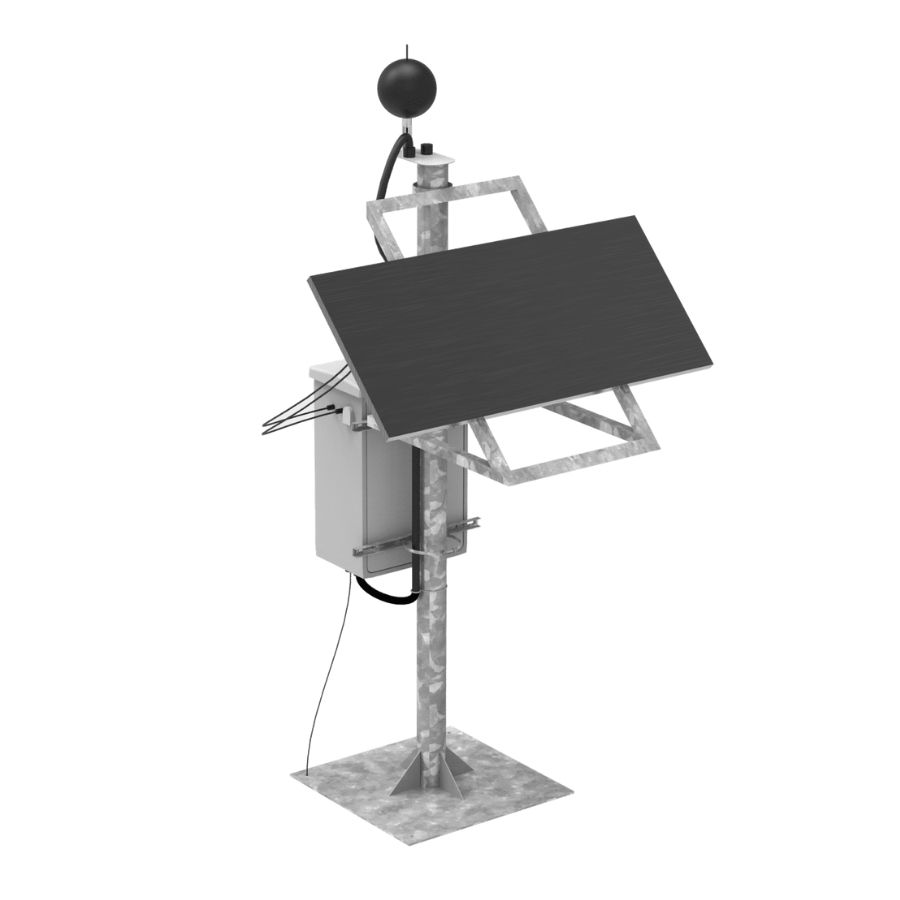Mems Accelerometer
MEMS Accelerometer
Description
The RECOVIB accelerometers bridge the gap between the performance of laboratory accelerometers (which are often expensive, fragile and offer low protection) and the robustness of functional accelerometers (which are sometimes cheaper but often noisy and inaccurate).
Our accelerometers can be deployed across a wide range of applications.
The main advantages are :
- Full bandwidth signal supply (all information available)
- Several output signals offered
- Direct current 4-20mA (possibility to use very long cable > 150m)
- Differential Voltage (increased noise immunity)
- Voltage (easy to install and compatible with a wide range of devices)
- Broad ranges and wide bandwidth from DC (to cover a lot of different application)
- Possible filters settings to accurately target the frequency
- Stainless steel or aluminum robust casings
- Cable gland or M12 cable output (delivery of associated cable – any lengths)
- Does exist in 1, 2 or 3 axes.
Field of applications
- Transport: Railways, Marine, Aeronautics
- Piping & pumps
- Machine tools
- Civil engineering
- Paper / Printing machines
- Semiconductors
- Energy: Wind turbines (including off-shore), power-plant
- Astronomy
Internal Signal Conditioning
Our accelerometers are equipped either with a voltage output or a 4-20 mA current output.
Galvanic isolation
An additional isolation module is therefore not needed.
Multiple sensors can be distributed in multiple locations and connected to the same acquisition system without signal degradation, even in environments with high ground potential differences due to heavy electrical loads operating in close proximity.
Level of protection
- The RECOVIB® accelerometers are sealed to an ingress protection level of IP67.
We are able to design and develop custom-made units using special protective materials (for example, 316L stainless steel for marine environments, special cabling for vacuum application).
Related Products
Additionnal Informations
Type of MEMS accelerometers
Capacitive MEMS Accelerometers:
These accelerometers utilize capacitive sensing techniques to measure accelerations. The capacitive transducers typically consist of micro-machined silicon structures with parallel plate configurations or comb drive designs.
Piezoresistive MEMS Accelerometers:
Piezoresistive accelerometers rely on changes in resistance as a result of applied stress during acceleration events. These devices typically use thin piezoresistive films over flexible cantilever beams or other structures to detect acceleration-related stress or strain variations.
Type of sensors
- IAC: for most applications, general use (noise <50µg/√Hz)
- IAC-MR: : for applications requiring low noise (<25µg/√Hz)
- IAC-HiRes: for applications requiring very low noise (<10µg/√Hz)
- IAC-UHRS: for very hight resolution/seismic (noise <2µg/√Hz)
- IAC-CM: for machine monitoring, higher-bandwidth (up to 24kHz)
Type of outputs
- 4-20mA current loop for long cables and/or easy connection to PLC
- Unipolar Voltage
- Differential voltage for high-resolution sensors
Wide frequency range with flat frequency response
The RECOVIB® accelerometers operate down to DC allowing for the accurate measurement of low frequency signals.
They are therefore also suitable for the monitoring of slow processes (such as monitoring the foundation movements of an off-shore wind turbine etc.).
Frequently Asked Questions
What are MEMS Accelerometers?
Why do we use MEMS accelerometers ?
That’s why we choose capacitive MEMS technology for our accelerometer range because they offer a flat noise spectrum which is better in low frequency measurements and also to be able to measure down to really close to DC.
This technology is also used in our Vib@work product range except for the Hand Arm models for which we have selected Piezoresistive MEMS accelerometers better suited for shocks measurement and also because they do not experience DC-shift or flash effect.
What are the advantages of Micromega accelerometers ?
- Works best at low frequencies (measured from the DC)
- Have a flat residual noise spectrum (therefore better at low frequencies)
- Can be installed without precise levelling
- Offer lower prices for standard sensors
- Can output 4-20mA signals
- Generate full bandwidth signals
How does a MEMS accelerometer works ?
Documentation
Closed
Summary
IAC-Accessories Brochure
Technical Notes
Closed
IAC- Brochures
IAC-MR Brochures
IAC-HiRes Brochures
Take a look at our presentation !
Contact Us
You have a question ? You need a quote ?
Tel : +32 (0) 81 24 81 00 | Mail : commercial@micromega-dynamics.com

